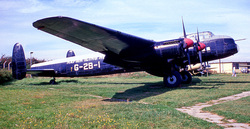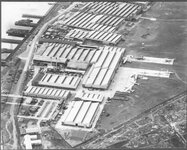As the title.
I was recently told that a mission was sent to the UK in 1943 to explore the possibility of producing the Lancaster in Australia. The source is a personal diary which I have not seen, but which is currently being digitised.
Given what I know of the capabilities of the Australian aircraft industry, such as it was, and historic production (they did do well with the Beaufighter/Beaufort among others) this seems rather optimistic. It would have required a massive investment, and a suitably large and skilled workforce would have been required.
Does anyone else know anything about this or what became of it?
I was recently told that a mission was sent to the UK in 1943 to explore the possibility of producing the Lancaster in Australia. The source is a personal diary which I have not seen, but which is currently being digitised.
Given what I know of the capabilities of the Australian aircraft industry, such as it was, and historic production (they did do well with the Beaufighter/Beaufort among others) this seems rather optimistic. It would have required a massive investment, and a suitably large and skilled workforce would have been required.
Does anyone else know anything about this or what became of it?


